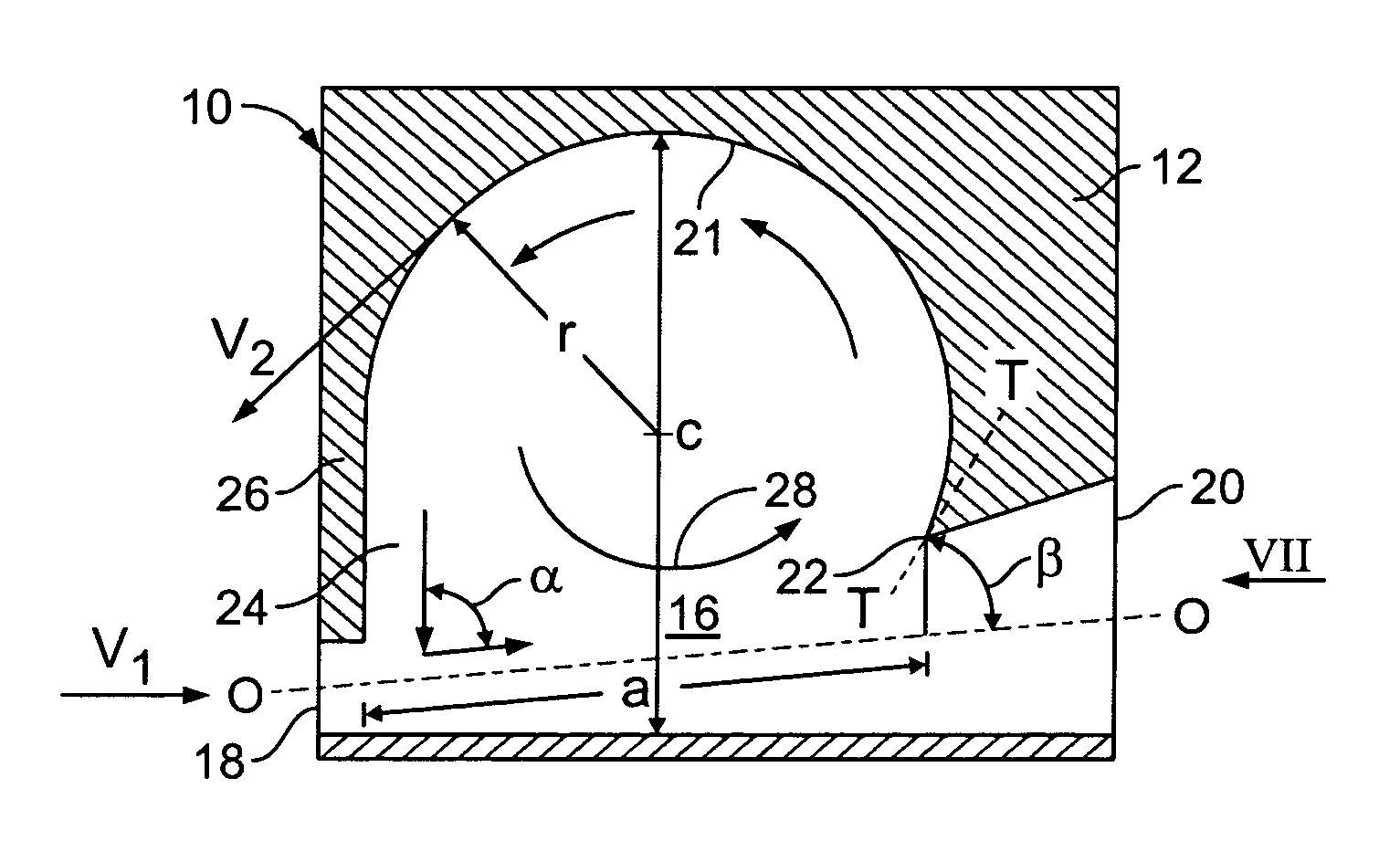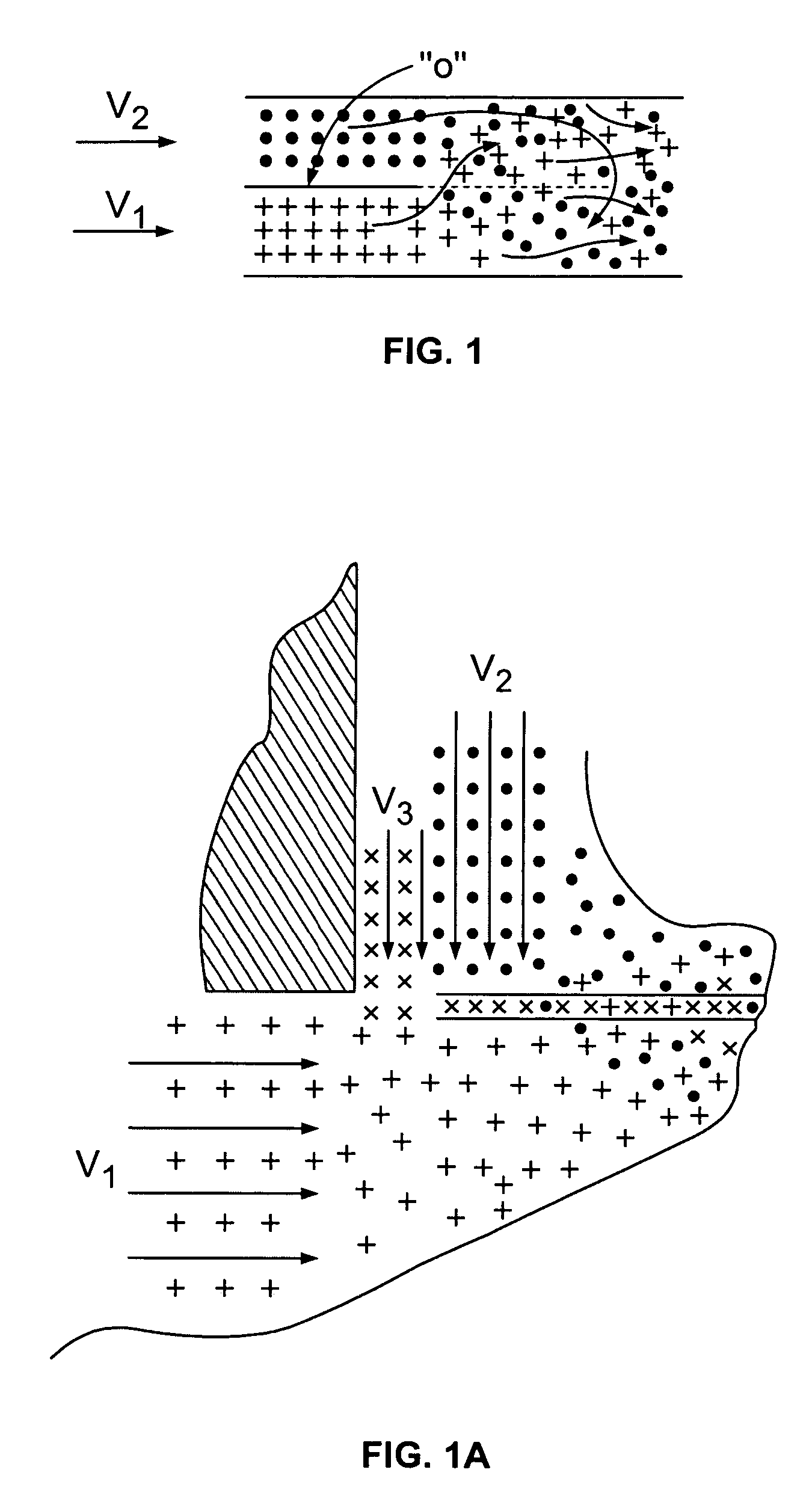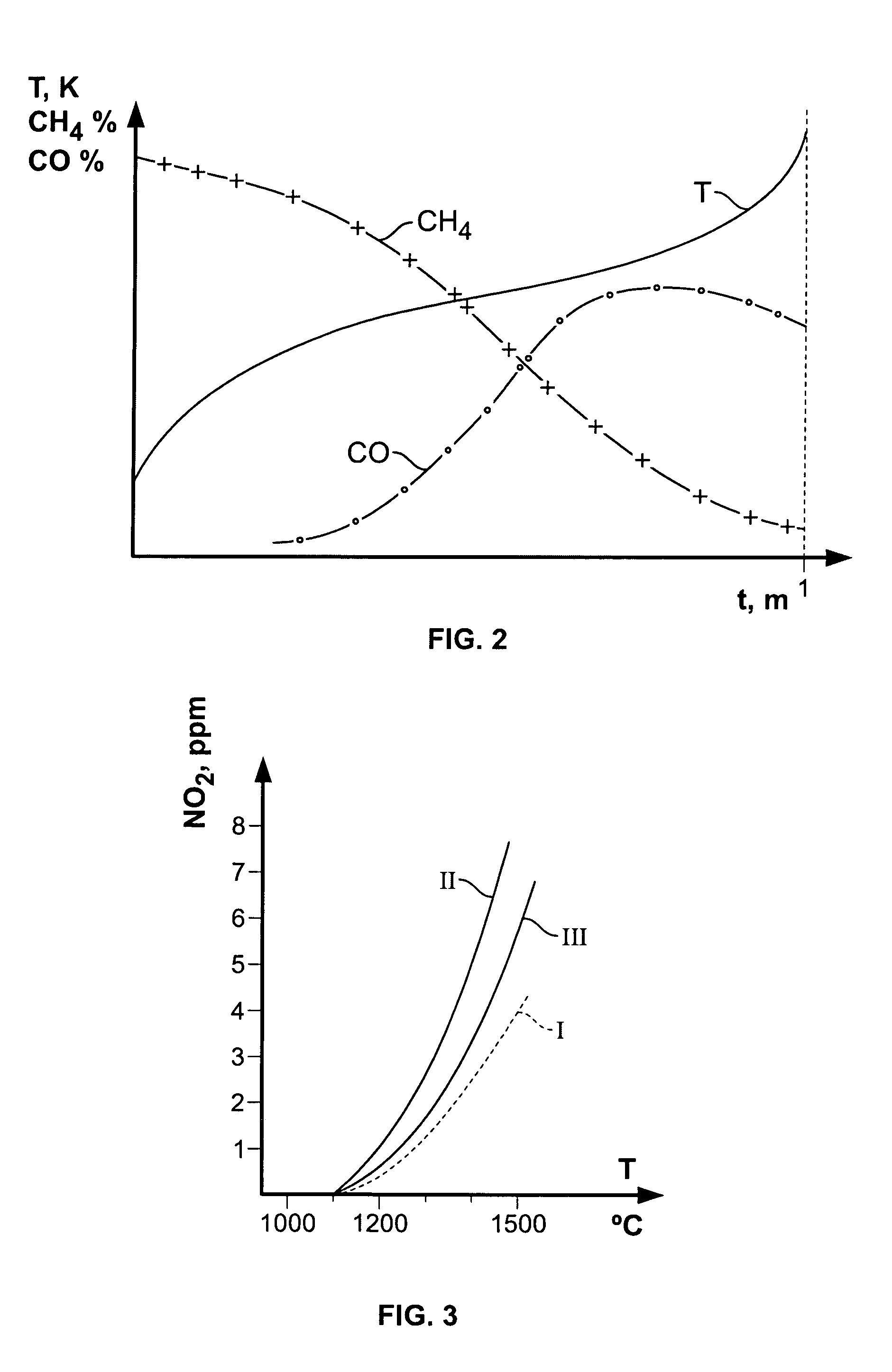Combustion method and apparatus for carrying out same
a combustion method and combustion method technology, applied in the direction of combustion types, lighting and heating apparatus, machines/engines, etc., can solve the problems of low energy supply to the fresh fuel/air mixture, not maximizing the velocity, and not maximizing the amount of thermal and kinetic energy injected into the main combustion flow
- Summary
- Abstract
- Description
- Claims
- Application Information
AI Technical Summary
Benefits of technology
Problems solved by technology
Method used
Image
Examples
Embodiment Construction
[0044]The invention will now be described in further detail and with reference to the accompanying drawings, illustrating non-limiting exemplary embodiments of the combustor according to invention.
[0045]As a preliminary matter, we provide some definitions for purposes of understanding this specification and the claims.
[0046]
Flamea thin area where chain oxidation reaction isCombustionstarting a chain reaction of fuel oxidation.Inflammation (orthe beginning stage of a chain oxidation reaction.firing, as in the usage“to be fired”)Flamelessthe phenomenon of the occurrence of oxidationcombustionreactions uniformly throughout the volume of themain flowReactordevice for the chemicalreaction realization
[0047]This specification generally uses the term “combustor” to refer to the apparatus described herein, although, as will be described, apparatus in accordance with the invention may be operated under conditions that favor fuel reformation rather than combustion. The term “reactor” is someti...
PUM
 Login to View More
Login to View More Abstract
Description
Claims
Application Information
 Login to View More
Login to View More - R&D
- Intellectual Property
- Life Sciences
- Materials
- Tech Scout
- Unparalleled Data Quality
- Higher Quality Content
- 60% Fewer Hallucinations
Browse by: Latest US Patents, China's latest patents, Technical Efficacy Thesaurus, Application Domain, Technology Topic, Popular Technical Reports.
© 2025 PatSnap. All rights reserved.Legal|Privacy policy|Modern Slavery Act Transparency Statement|Sitemap|About US| Contact US: help@patsnap.com



